Urban / Improvisation
The urban lens foregrounds improvisation practices that give life to Beirut's ground, proof of the inventiveness and self-organization that spill to the built environment. such practices came to define the experience of the city and its ground, making it vibrant and benevolent despite its adversities.
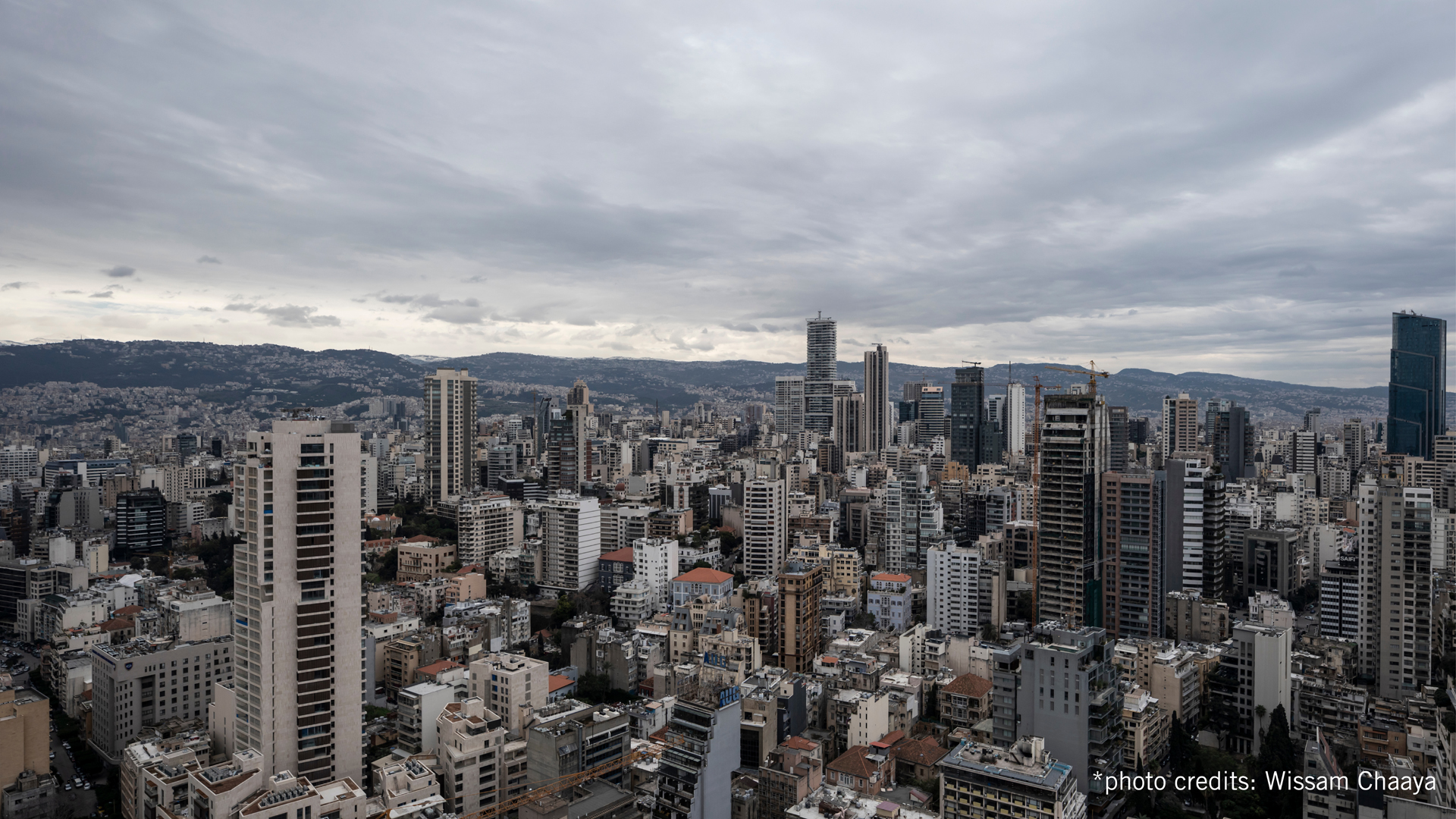



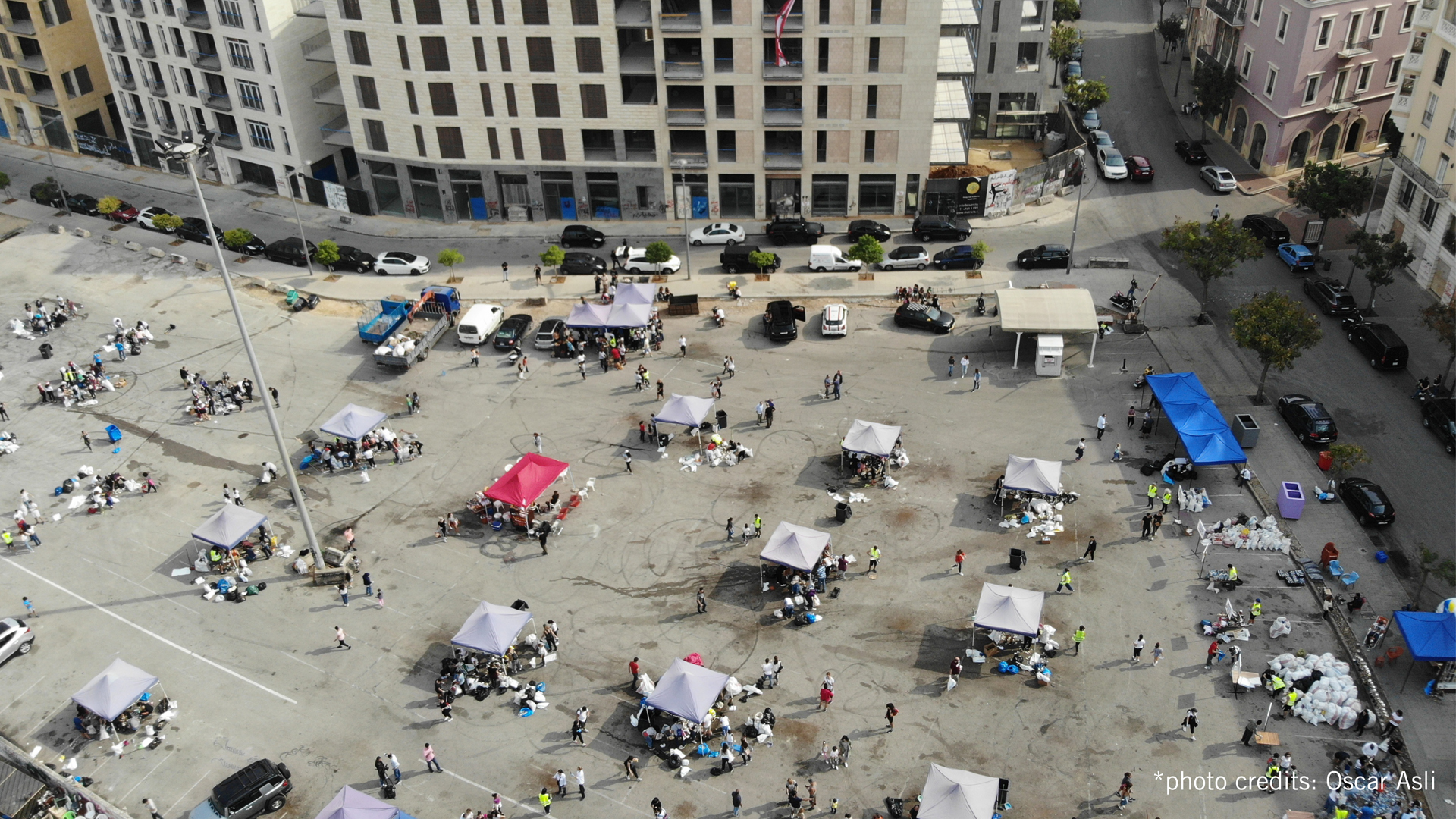

Often nested in “third spaces” at the intersection of private and public realms, spontaneous appropriations overlay the ground to accommodate people’s mixed activities and living needs.





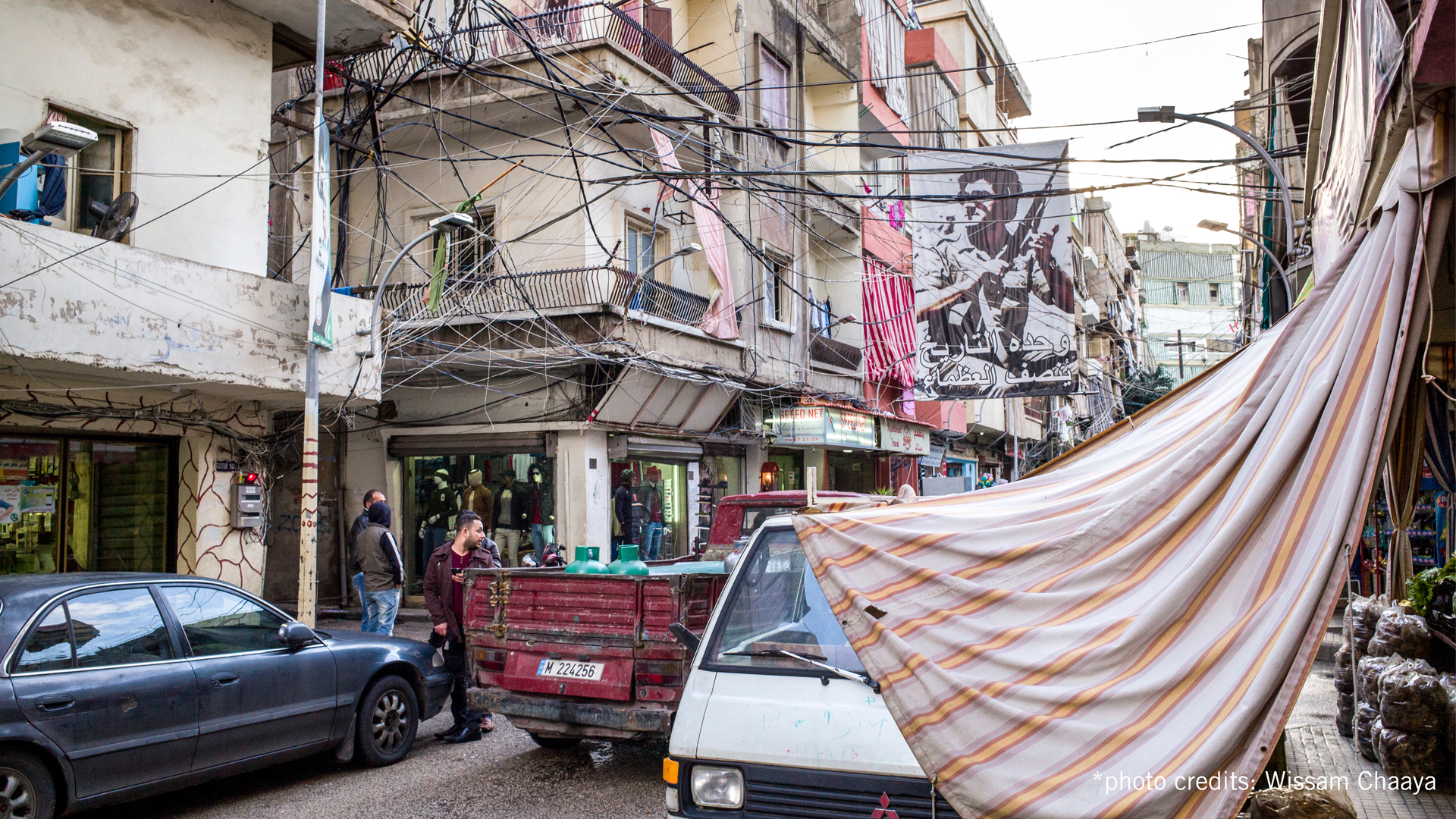

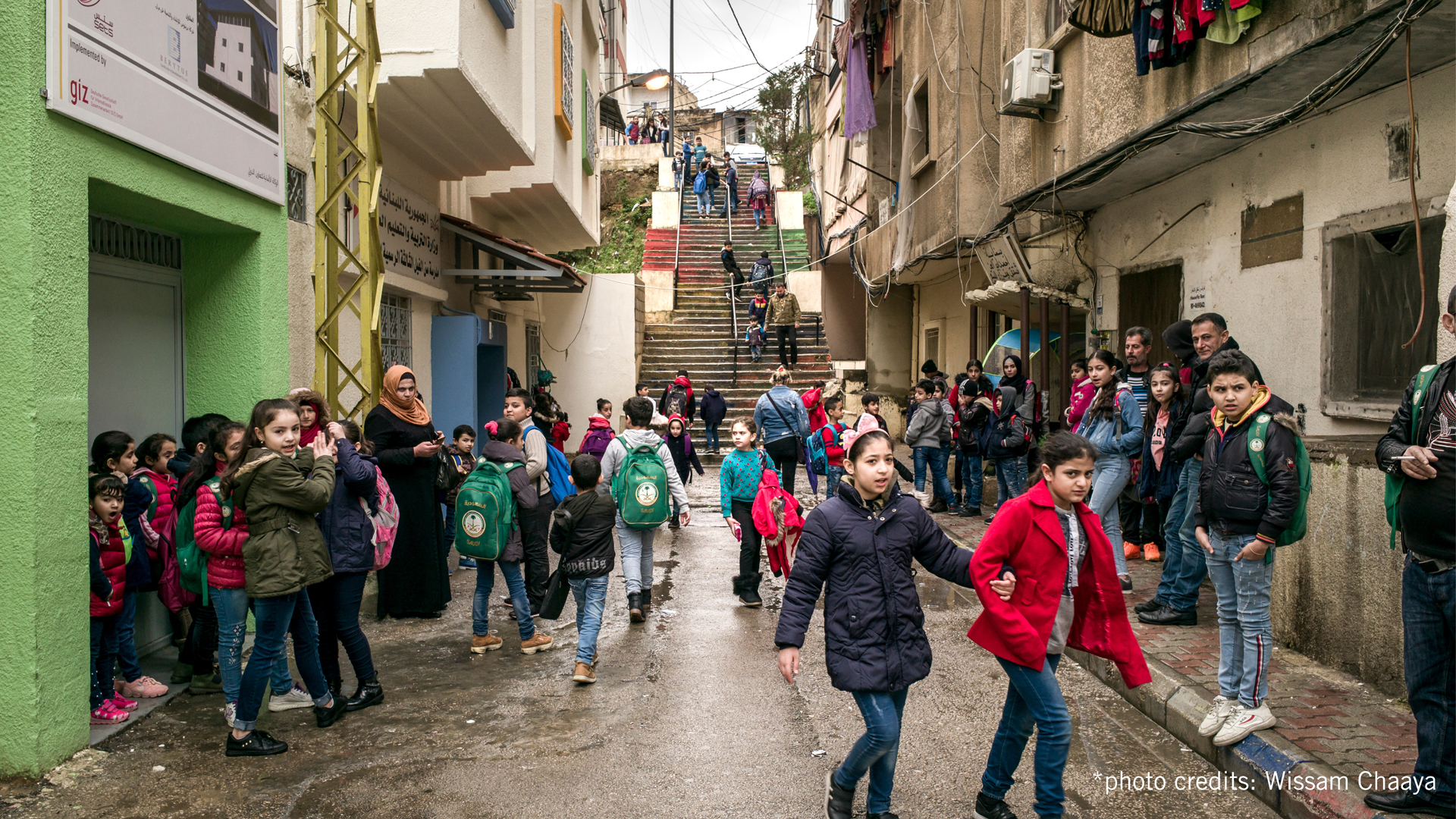
From alternative services by private providers, to food banks and social services of an active NGO scene, to the solidary behaviors of citizens when encountering hardship, such practices came to define the experience of the city and its ground, making it vibrant and, at times, benevolent despite its adversities.
As the embodiment of such experiences, Beirut’s urban patchworks gave room to the many rhythms and multiplicities that are found in its diverse urban fabric.
As the embodiment of such experiences, Beirut’s urban patchworks gave room to the many rhythms and multiplicities that are found in its diverse urban fabric.

The urban lens explores this ambivalent relationship between the architecture of the ground and its appropriation in seven neighborhoods: Achrafieh (Sassine), Badaro, Mar Mikhael, Bourj Hammoud (Nor Marash), Hamra, Jnah, and Ain El Remmane.


We look at the urban and social porosities between street space and private properties that give rise to localized practices, spatial appropriations, and coping mechanisms.
Short terms indicators- flows, appropriations, noise show the pulse at a comparative time bracket, a midday afternoon.
Short terms indicators- flows, appropriations, noise show the pulse at a comparative time bracket, a midday afternoon.
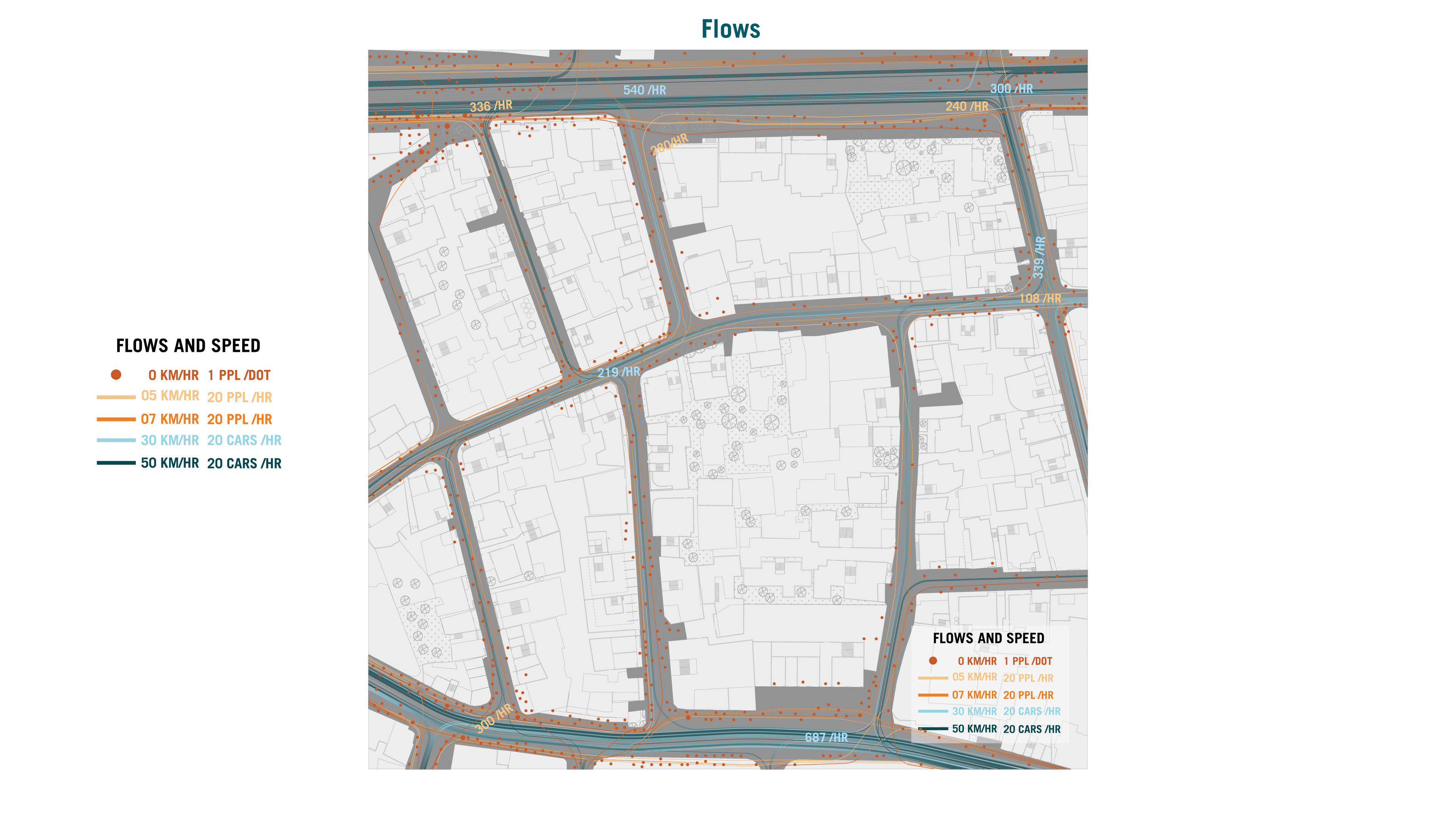


Long term indicators, landscape, mixity and thermal exposure show often aspects that shape undeniable patterns of ground occupation and atmospheres of appropriation.



The varying levels of appropriations imbue the ground with a sense of legibility—and arguably, an identity—that the built form fails to deliver.

Achrafieh











Ain El Remmane







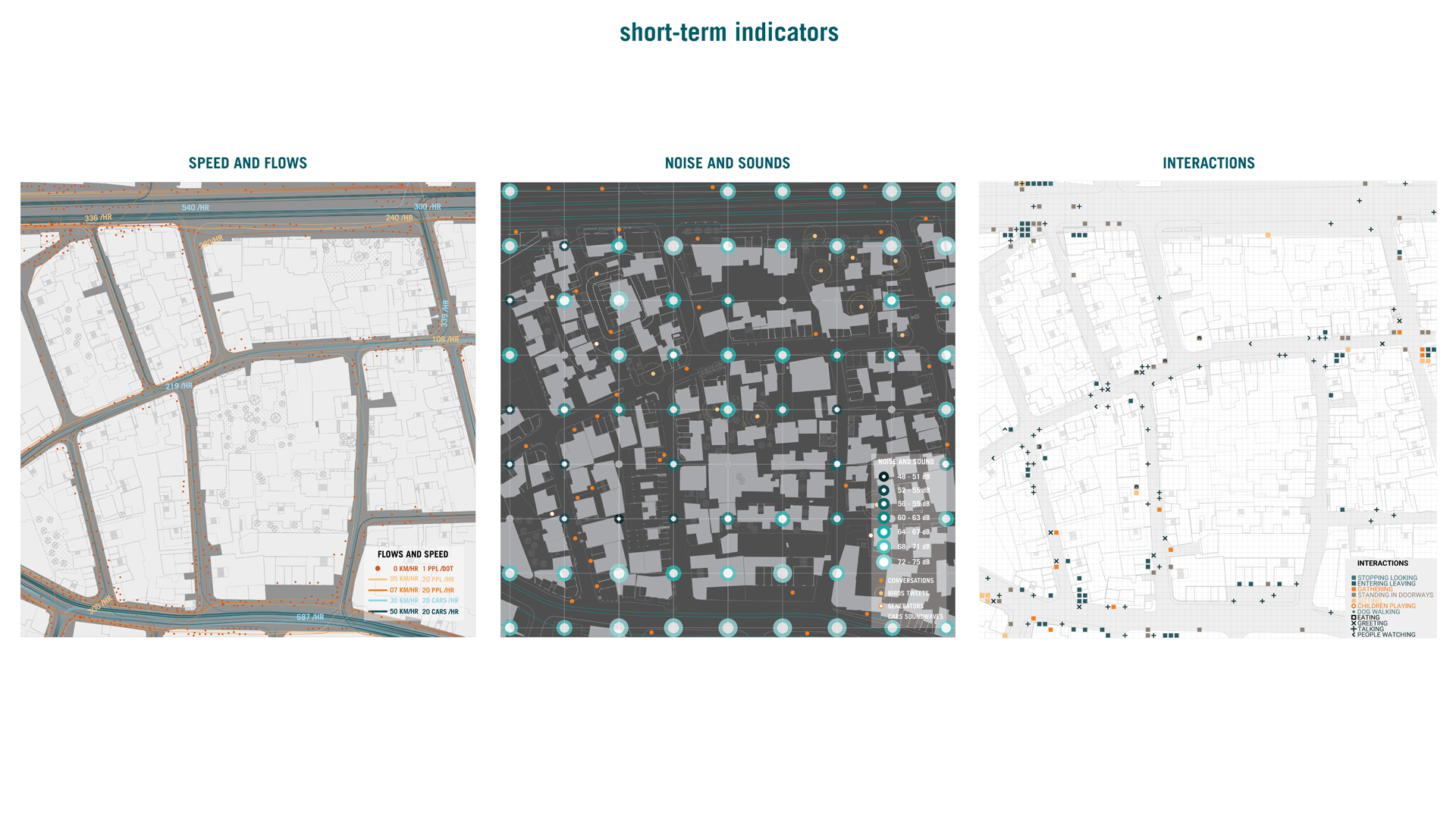


Badaro





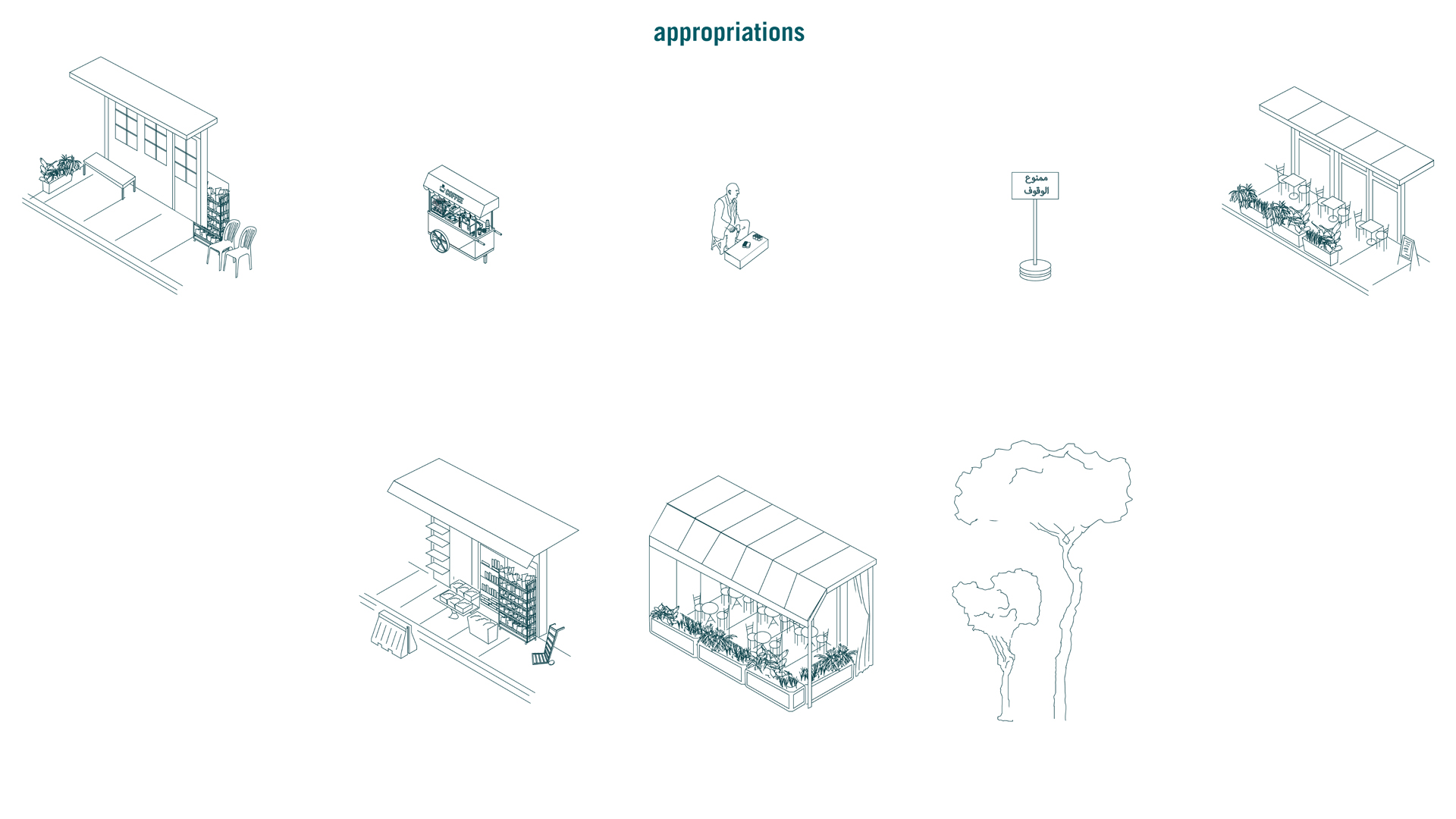






Bourj Hammoud









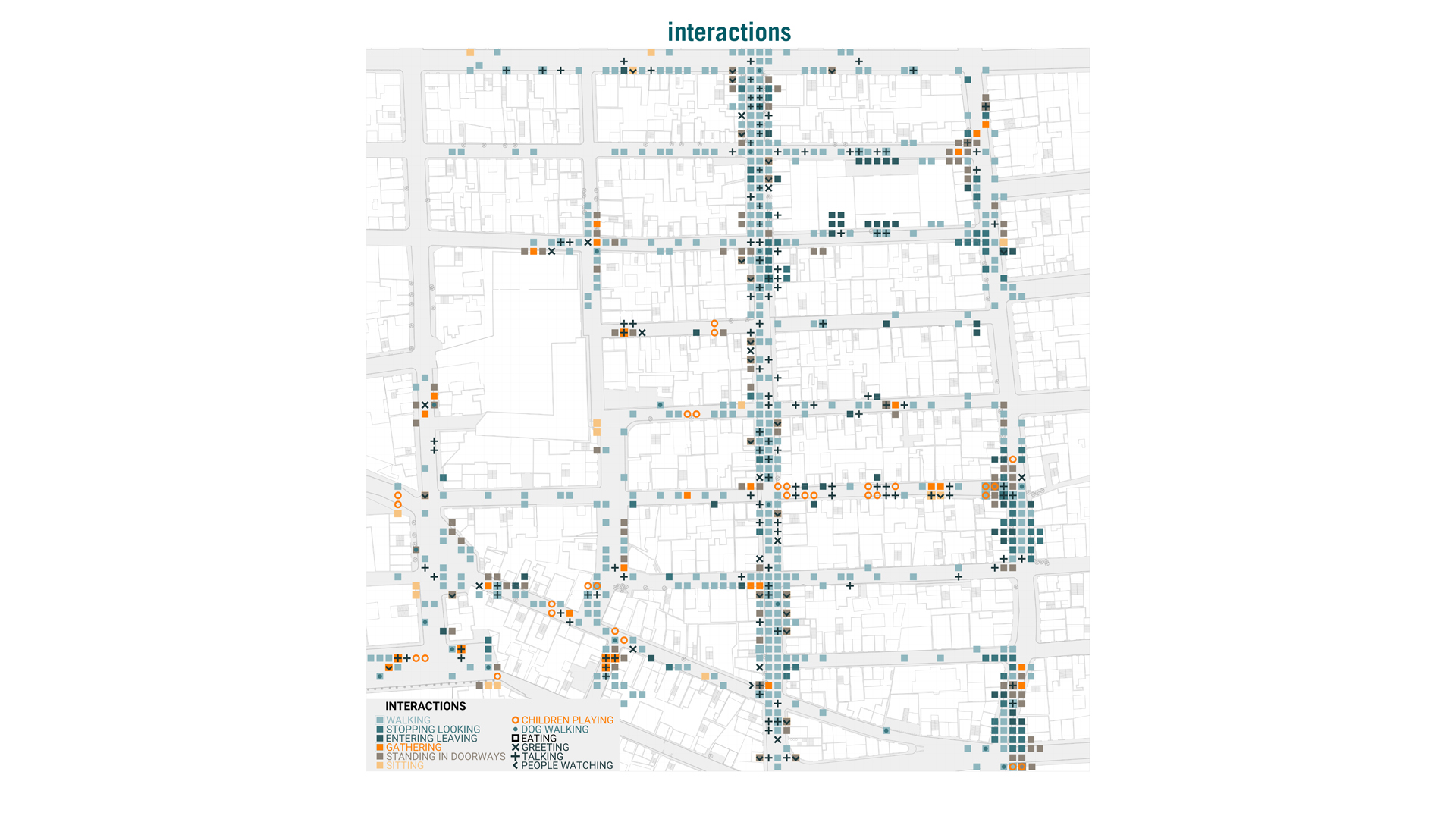

Hamra










Jnah







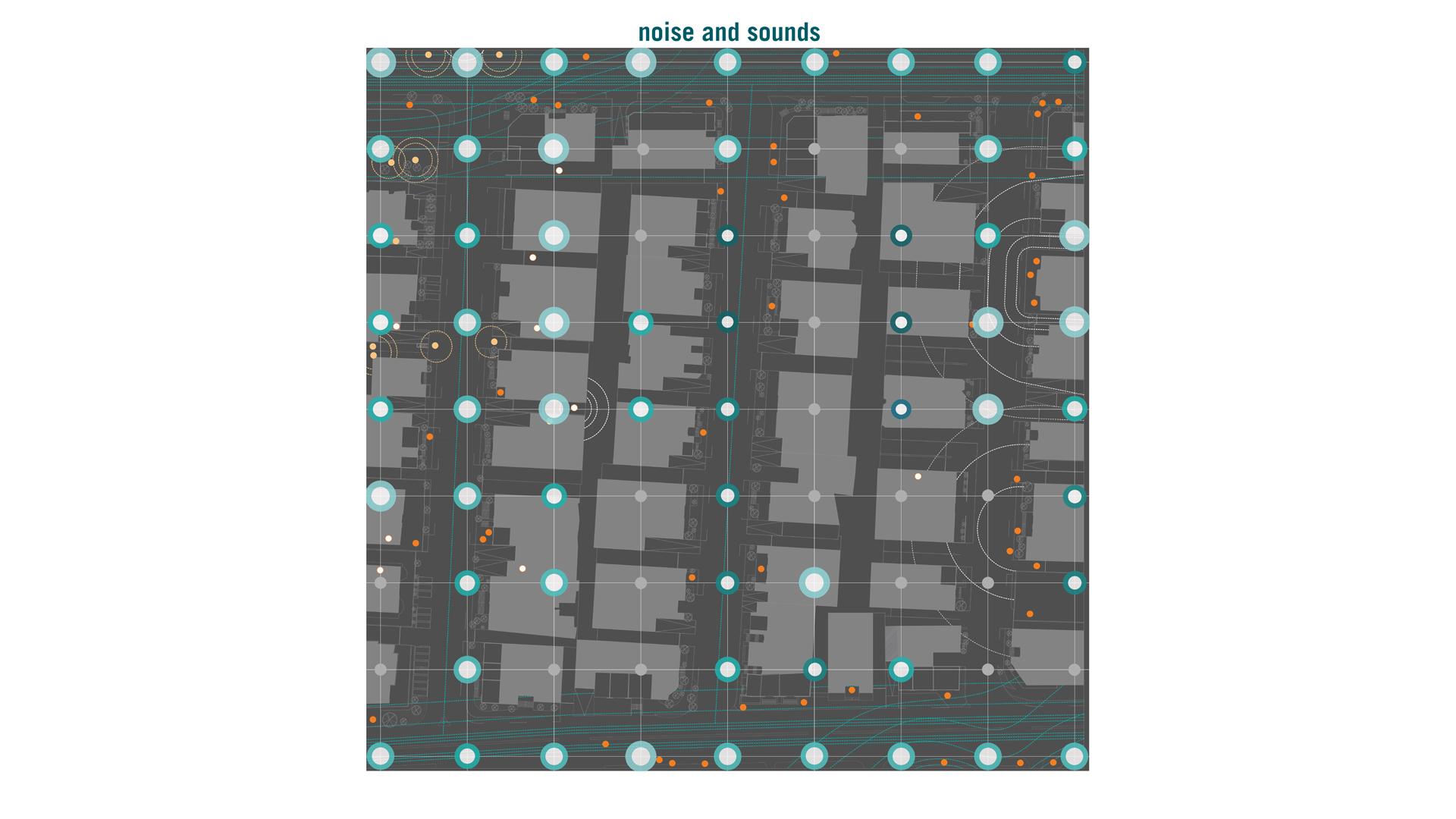




Mar Mikhael










In the aftermath of the Port Blast, the deployment of civil society, ngos, and grassroots groups evolved from improvisation to a networked self-organization, that provided first-aid, relief and reconstruction. We use Mar Mikhael as a ground that was heavily affected due to its proximity from the Beirut Port, to trace such evolution.
In their different manifestations, the grassroots-initiated relief and rebuilding efforts echo an emerging civic consciousness that disrupted the pre-blast capitalist models of urban development.



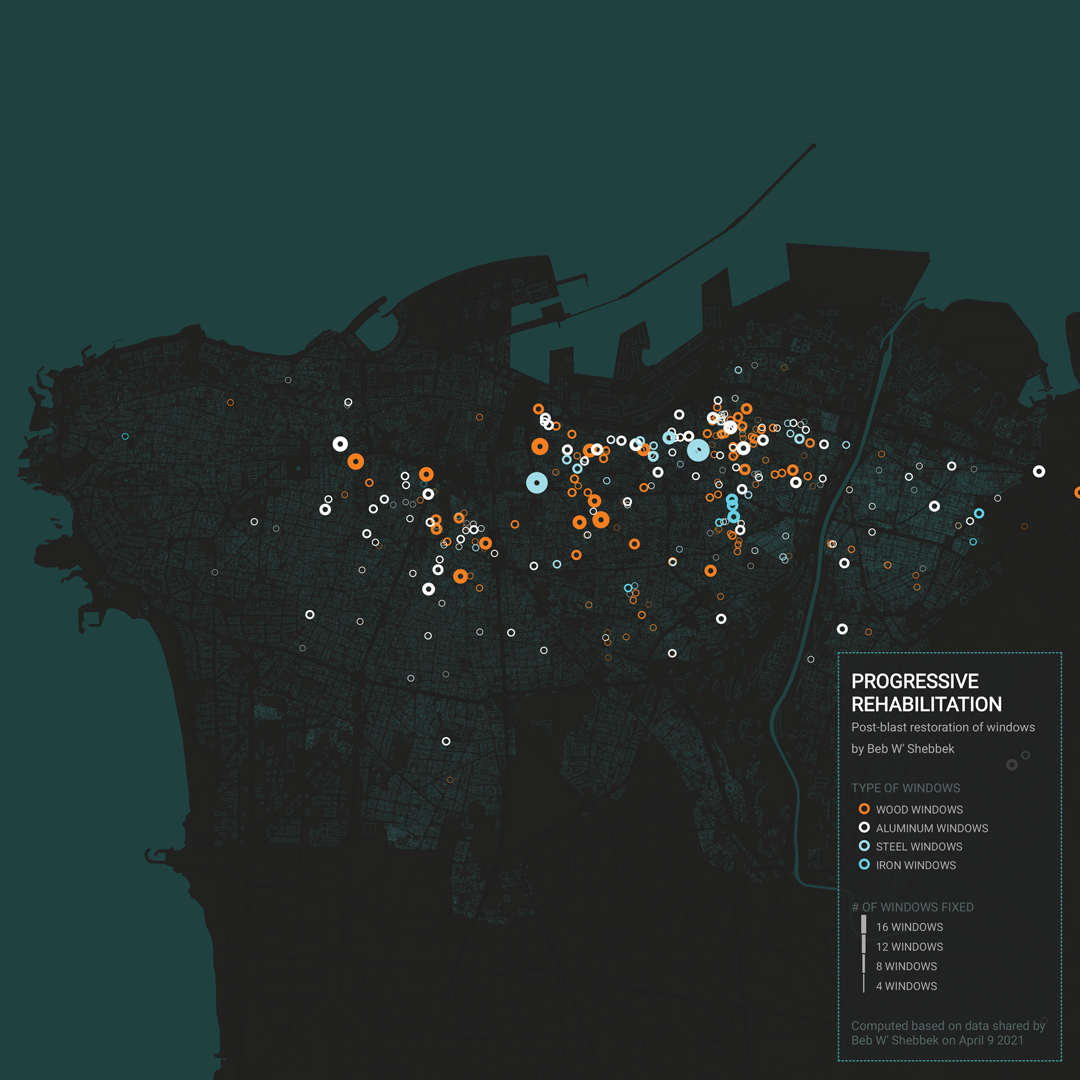
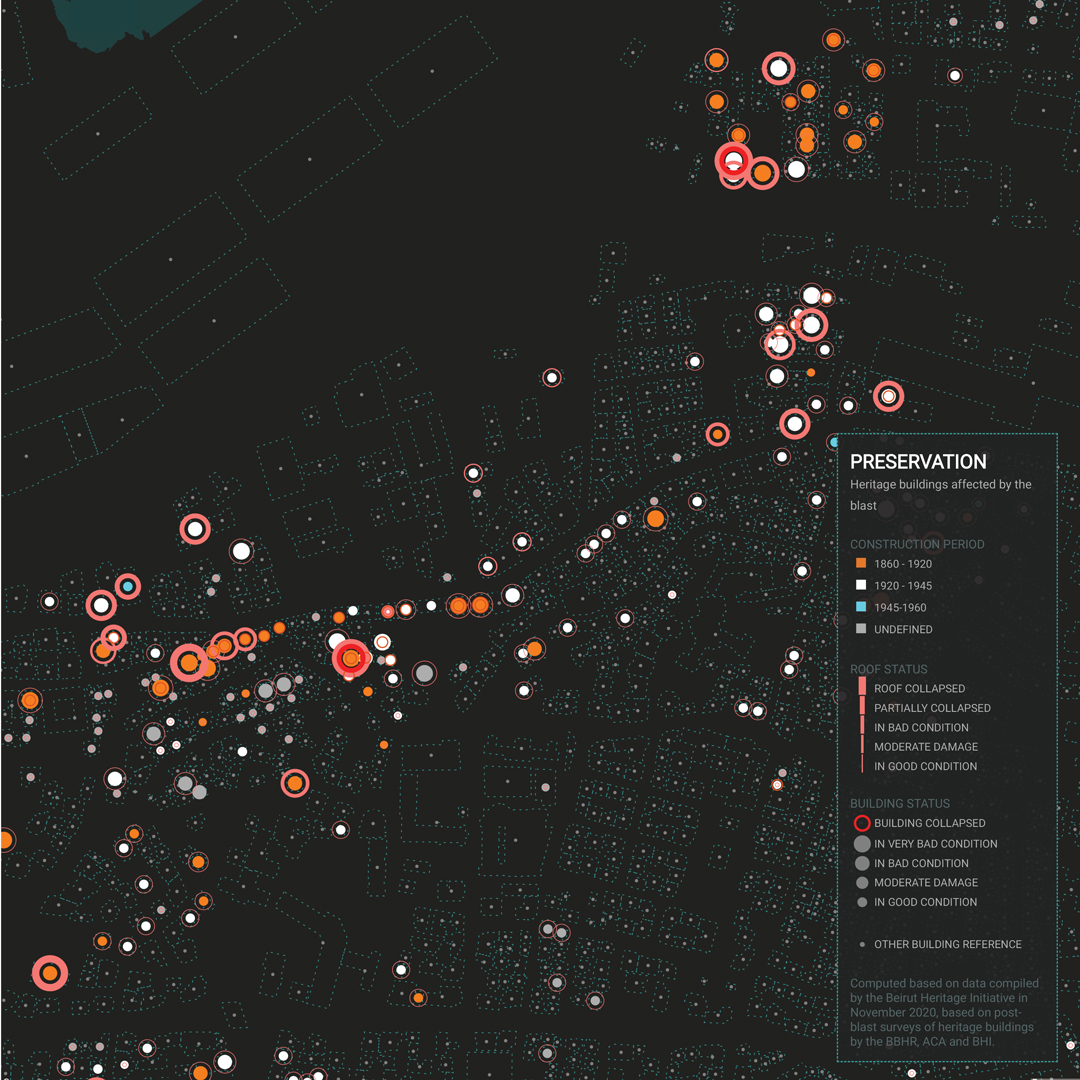




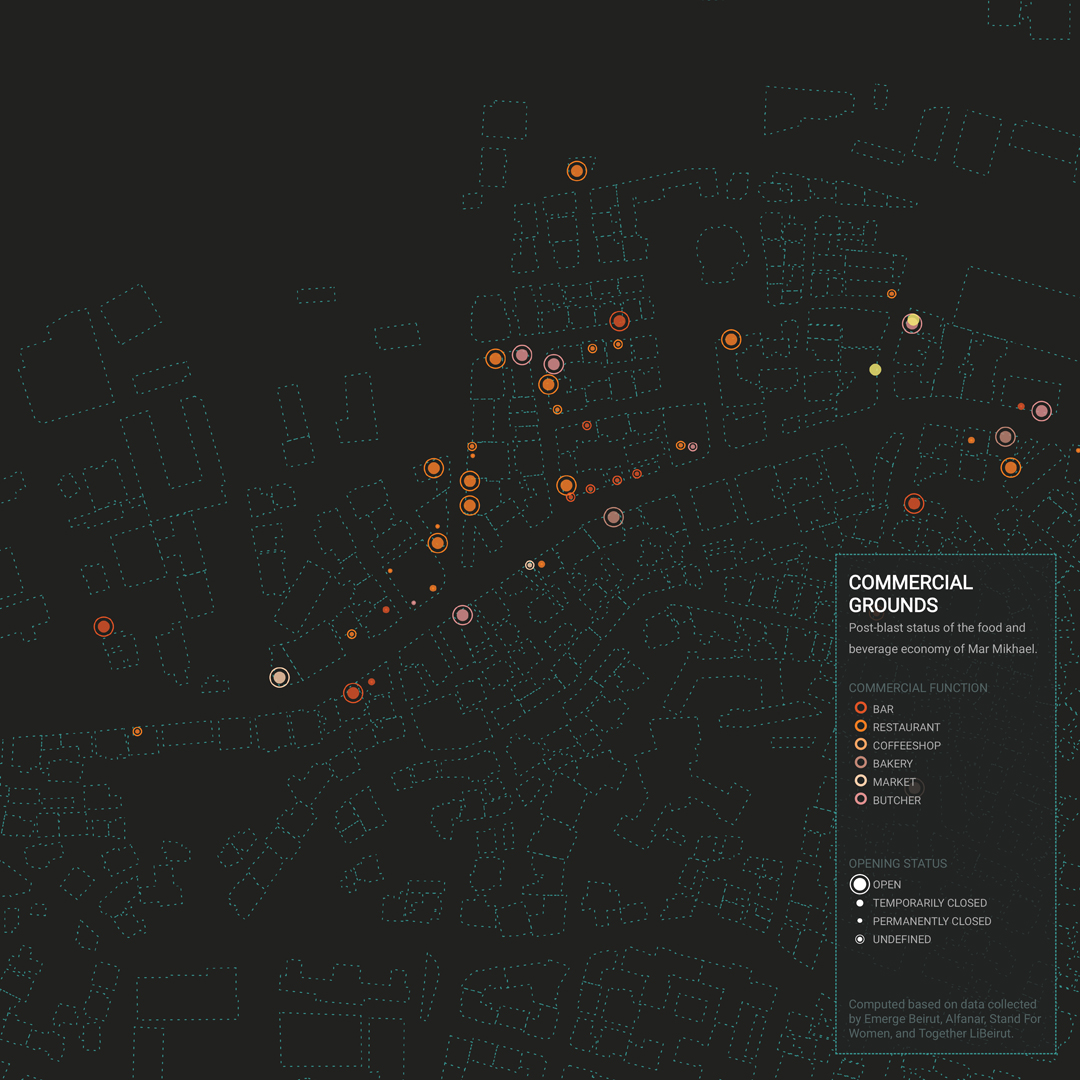













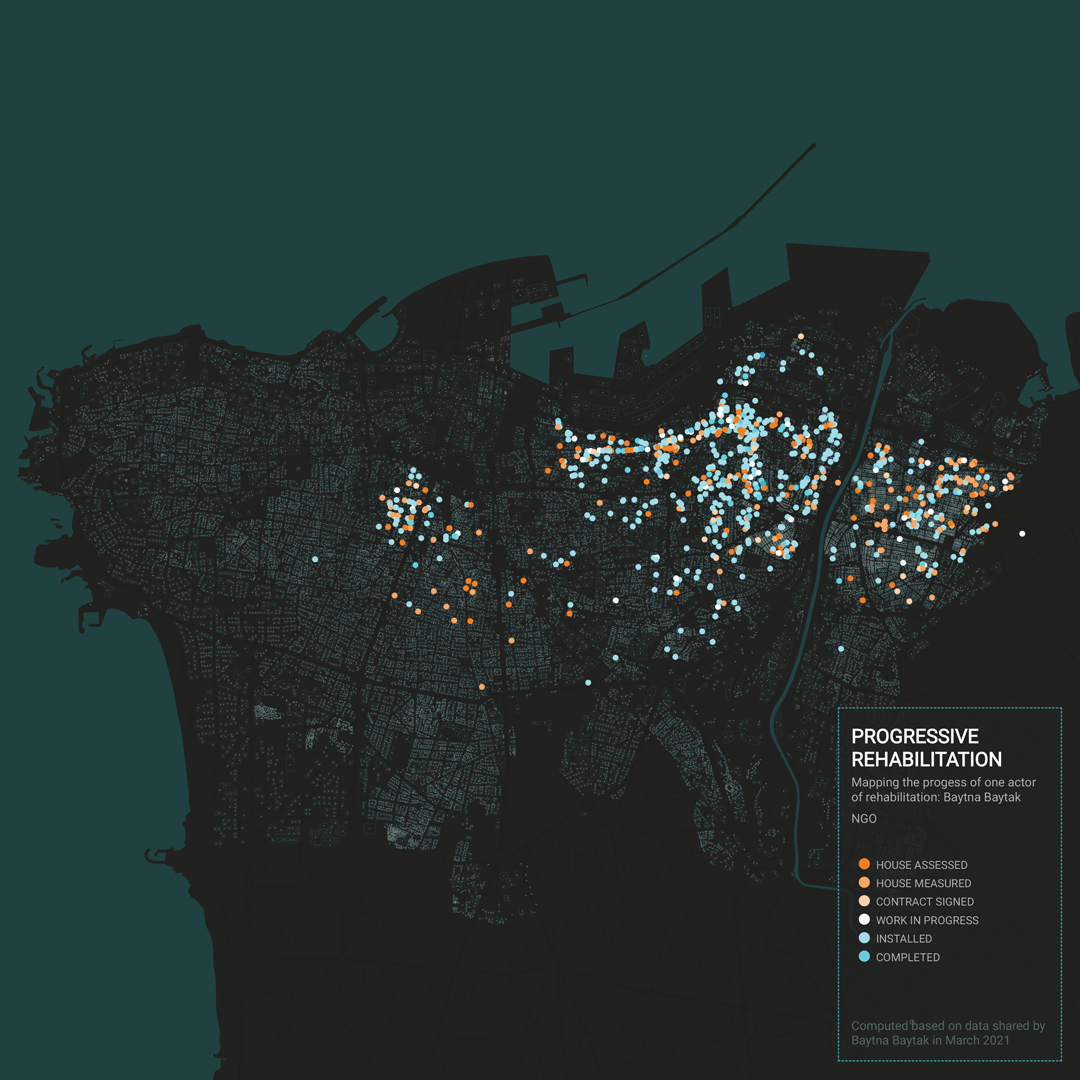


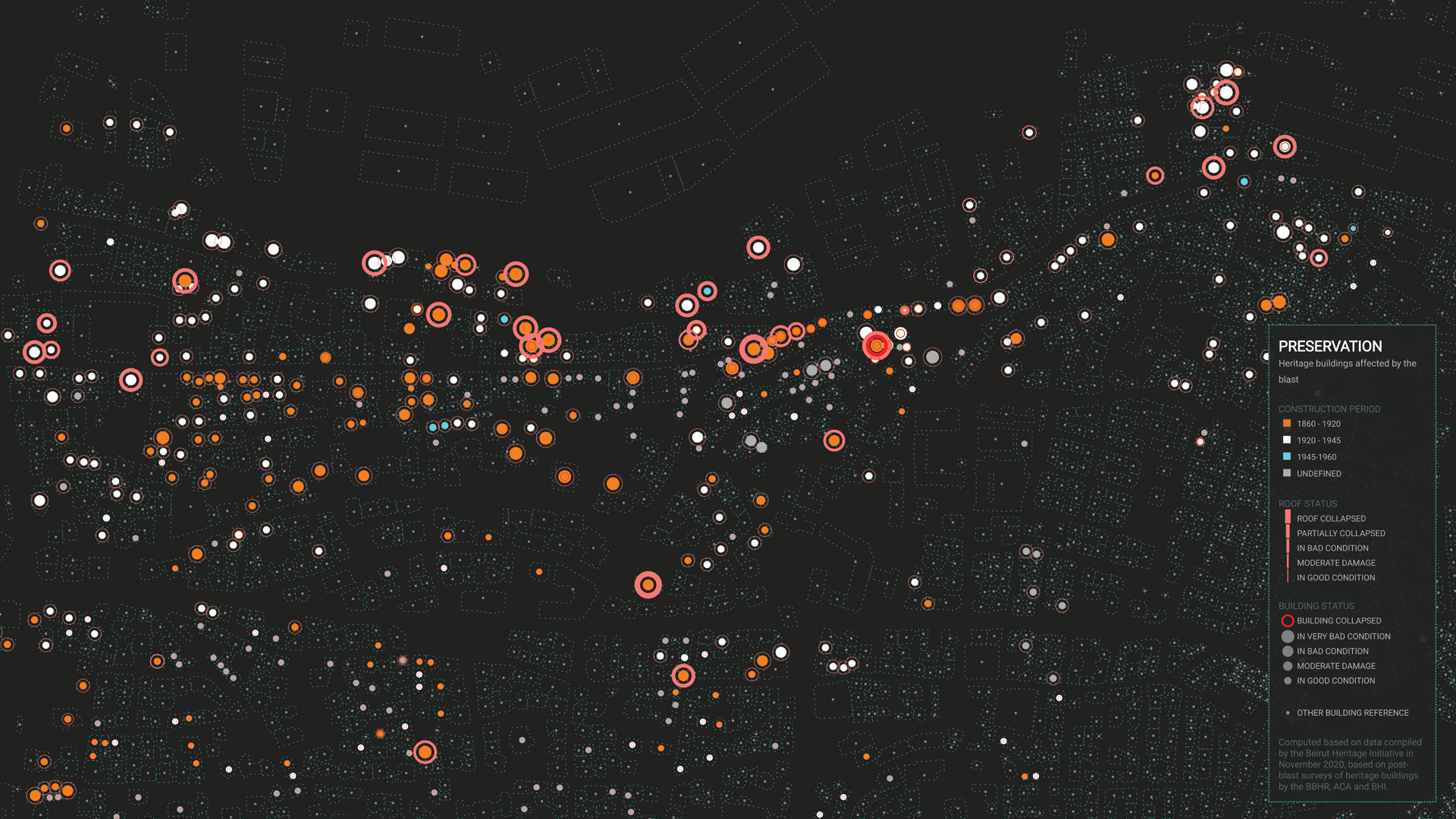








Such practices show valuable communal ways of inhabiting and reclaiming the ground, that reflect communal aspirations and engage ground realities.
Credits
Lead Investigator
Sandra Frem
Sandra Frem
Contributors
Nayla Al Akl, Ahmad Nouraldeen , Joanne Hayek
Nayla Al Akl, Ahmad Nouraldeen , Joanne Hayek
Team
Mariana Boughaba, Annabelle Chebat, Dina Chehab, Gina Ghaoui, Joanna Howayek, Lynne Khater, Tara Kanj, Thea Maria Maroun, Nathalie Mounzer, Rayanne Njeim, Yasmine Saad, Clara Saade, Lama Salameh, Hala Stouhi, Hussein Zaarour, Maya Ziad
Mariana Boughaba, Annabelle Chebat, Dina Chehab, Gina Ghaoui, Joanna Howayek, Lynne Khater, Tara Kanj, Thea Maria Maroun, Nathalie Mounzer, Rayanne Njeim, Yasmine Saad, Clara Saade, Lama Salameh, Hala Stouhi, Hussein Zaarour, Maya Ziad
Acknowledgments
Balsam Madi
Beirut Urban Lab
Center for Research Computing's Spatial Studies Lab at Rice University,
Open Map Lebanon,
Serge Yazigi
Balsam Madi
Beirut Urban Lab
Center for Research Computing's Spatial Studies Lab at Rice University,
Open Map Lebanon,
Serge Yazigi
We would like to thank
Joumana Kreidi Nasr and Nour Najem (Together LiBeirut); Maj. Elie Salem (BeirutFER); Joy Kanaan and Yasmine Dagher (Beirut Heritage Initiative) ; Caroline Fattal, Sarine Anserlian and Roula Achkouti (Stand For Women); Yasmina Skaff (The Women Collective); Michelle Mouracade and Marina Chamma (AlFanar); Elisabetta Pietrostefani and Mayssa Jallad (The Relief Center); Joana Dabaj (Catalytic Action); Lea Ghorayeb and Jacques Matta (Baytna Baytak); Mariana Wehbe, Michelle Salamoun and Nour Farhat (Beb W’ Shebbek); Tamara Saade; Evita Mouawad; Elie Mansour (UNHabitat); Michel Semaan and Dorothea Wenzel (Ardkon)
Joumana Kreidi Nasr and Nour Najem (Together LiBeirut); Maj. Elie Salem (BeirutFER); Joy Kanaan and Yasmine Dagher (Beirut Heritage Initiative) ; Caroline Fattal, Sarine Anserlian and Roula Achkouti (Stand For Women); Yasmina Skaff (The Women Collective); Michelle Mouracade and Marina Chamma (AlFanar); Elisabetta Pietrostefani and Mayssa Jallad (The Relief Center); Joana Dabaj (Catalytic Action); Lea Ghorayeb and Jacques Matta (Baytna Baytak); Mariana Wehbe, Michelle Salamoun and Nour Farhat (Beb W’ Shebbek); Tamara Saade; Evita Mouawad; Elie Mansour (UNHabitat); Michel Semaan and Dorothea Wenzel (Ardkon)
References and Bibliography
Davie, M ( 2001) – Beyrouth 1825-1975, un siècle et demi d’urbanisme, Beyrouth, Ordre des Ingénieurs et architectes de Beyrouth, 2001, 136 p.
Kassir, S ( 2003) Beirut. University of California Press
Jabri, L. (2008). Tying back the city sea edge: piercing through Ouzai-Jnah informal settlement. Theses, Dissertations, and Projects. Faculty of Engineering and Architecture, Department of Architecture and Design, American University of Beirut.
Nahle, R. (2021). Activating Public Life in Neighborhoods through Soft Mobility and a Network of Open Spaces: The case of Badaro, Beirut infrastructure (MUD Thesis). Faculty of Engineering and Architecture, Department of Architecture and Design, American University of Beirut.
Hamdar, L. (2020). Sectarian Border Zones As Limbo Land: Devising Resilient Urban Design Strategies for the Southern Segment of Old Saida Road (MUD Thesis). Faculty of Engineering and Architecture, Department of Architecture and Design, American University of Beirut.
Asmar, F. M. (2008). Revitilizing waterfronts or urban fragmentations the Northern shoreline of Beirut and the isolation of Bourj Hammoud's waterfront-by Fadi Moussa Asmar (MUPP Thesis). Faculty of Engineering and Architecture, Department of Architecture and Design, American University of Beirut.
Baitarian, L. K. (2019). Reviving Marash: urban greening and urban agriculture as a tool for social, economic, and environmental revitalization of Marash neighborhood, Bourj Hammoud (Project). Faculty of Engineering and Architecture, Department of Architecture and Design, American University of Beirut.
Rahbany, A. (ed. 2014) Beirut urban review. Urban Learning Hub (ULH) in World Vision (WV) Middle East and Eastern Europe Regional Office (MEERO), WV Lebanon (WVL) Beirut program and the Masters in Urban Planning and Policy Program at the American University of Beirut (AUB).
Kassir, S ( 2003) Beirut. University of California Press
Jabri, L. (2008). Tying back the city sea edge: piercing through Ouzai-Jnah informal settlement. Theses, Dissertations, and Projects. Faculty of Engineering and Architecture, Department of Architecture and Design, American University of Beirut.
Nahle, R. (2021). Activating Public Life in Neighborhoods through Soft Mobility and a Network of Open Spaces: The case of Badaro, Beirut infrastructure (MUD Thesis). Faculty of Engineering and Architecture, Department of Architecture and Design, American University of Beirut.
Hamdar, L. (2020). Sectarian Border Zones As Limbo Land: Devising Resilient Urban Design Strategies for the Southern Segment of Old Saida Road (MUD Thesis). Faculty of Engineering and Architecture, Department of Architecture and Design, American University of Beirut.
Asmar, F. M. (2008). Revitilizing waterfronts or urban fragmentations the Northern shoreline of Beirut and the isolation of Bourj Hammoud's waterfront-by Fadi Moussa Asmar (MUPP Thesis). Faculty of Engineering and Architecture, Department of Architecture and Design, American University of Beirut.
Baitarian, L. K. (2019). Reviving Marash: urban greening and urban agriculture as a tool for social, economic, and environmental revitalization of Marash neighborhood, Bourj Hammoud (Project). Faculty of Engineering and Architecture, Department of Architecture and Design, American University of Beirut.
Rahbany, A. (ed. 2014) Beirut urban review. Urban Learning Hub (ULH) in World Vision (WV) Middle East and Eastern Europe Regional Office (MEERO), WV Lebanon (WVL) Beirut program and the Masters in Urban Planning and Policy Program at the American University of Beirut (AUB).